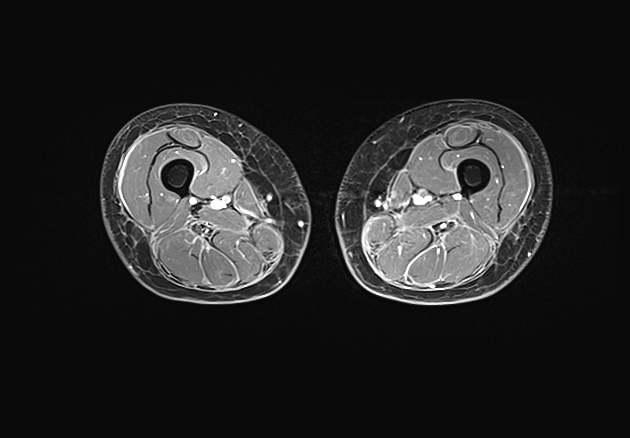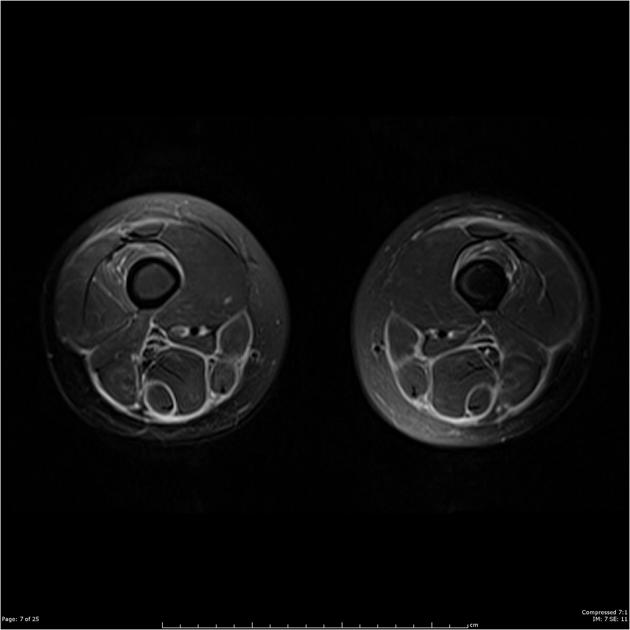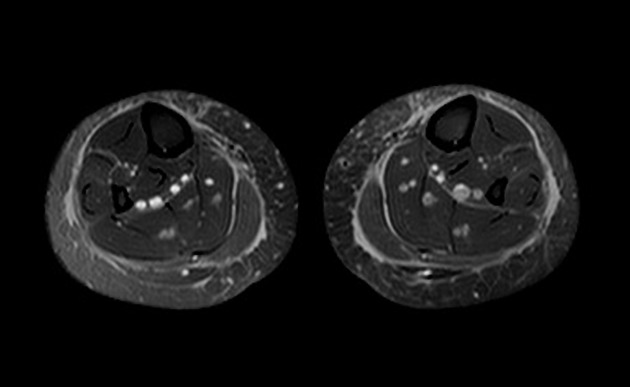Eosinophilic fasciitis (rare plural: eosinophilic fasciitides), also known as Shulman disease/syndrome, is an uncommon connective tissue disorder.
On this page:
Epidemiology
It can potentially present at any age. There is a recognized female predilection 3,4.
Clinical presentation
Patients typically present with pronounced extremity edema and skin induration.
Clinical features include
peripheral eosinophilia
hypergammaglobulinemia
elevated erythrocyte sedimentation rate (ESR) / C-reactive protein (CRP)
scleroderma-like cutaneous changes
Location
Eosinophilic fasciitis tends to involve the limbs.
Radiographic features
MRI
MRI demonstrates muscular fascial plane thickening without any myositis. Changes are generally symmetrical. Signal changes include the following 1,3:
T2 FS/STIR: high signal compared to muscle involving fascial planes
T1 C+ (Gd): shows fascial enhancement
Treatment and prognosis
Eosinophilic fasciitis tends to respond to corticosteroids with excellent response.
History and etymology
Eosinophilic fasciitis was first described by L E Shulman et al. in 1975, hence its eponym 2.
Differential diagnosis
Imaging differential considerations include
necrotizing fasciitis: tends to have accompanying fluid/gas collections/abscess formation, cellulitis and muscle inflammation







 Unable to process the form. Check for errors and try again.
Unable to process the form. Check for errors and try again.